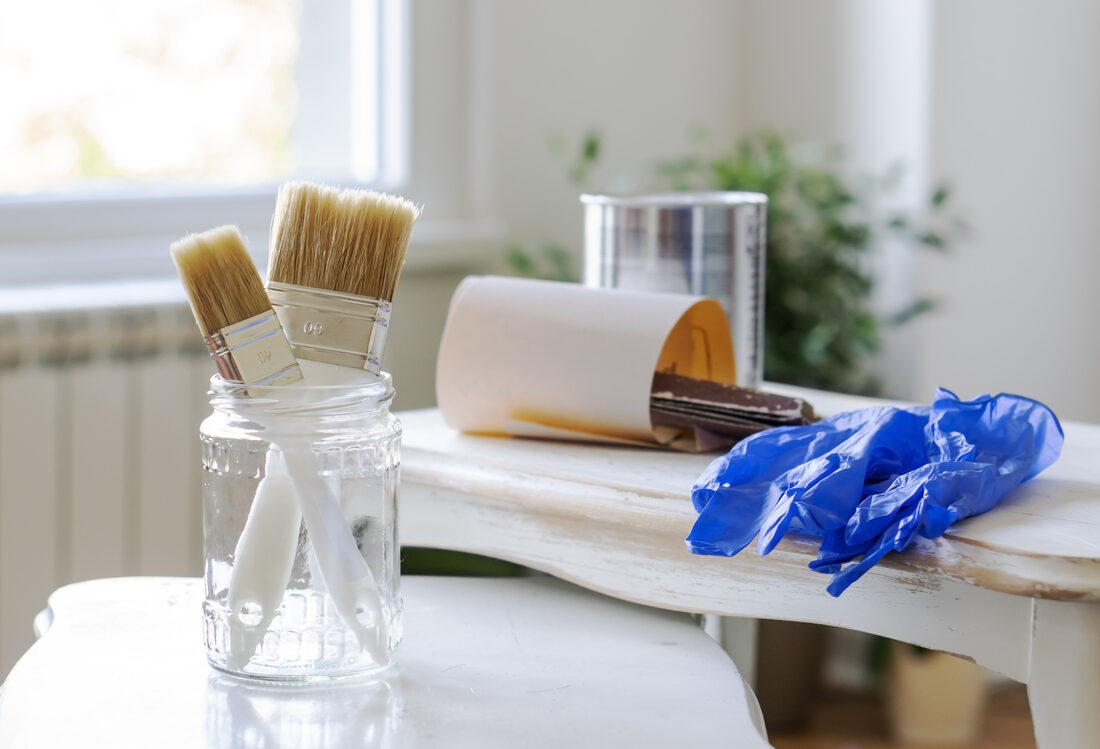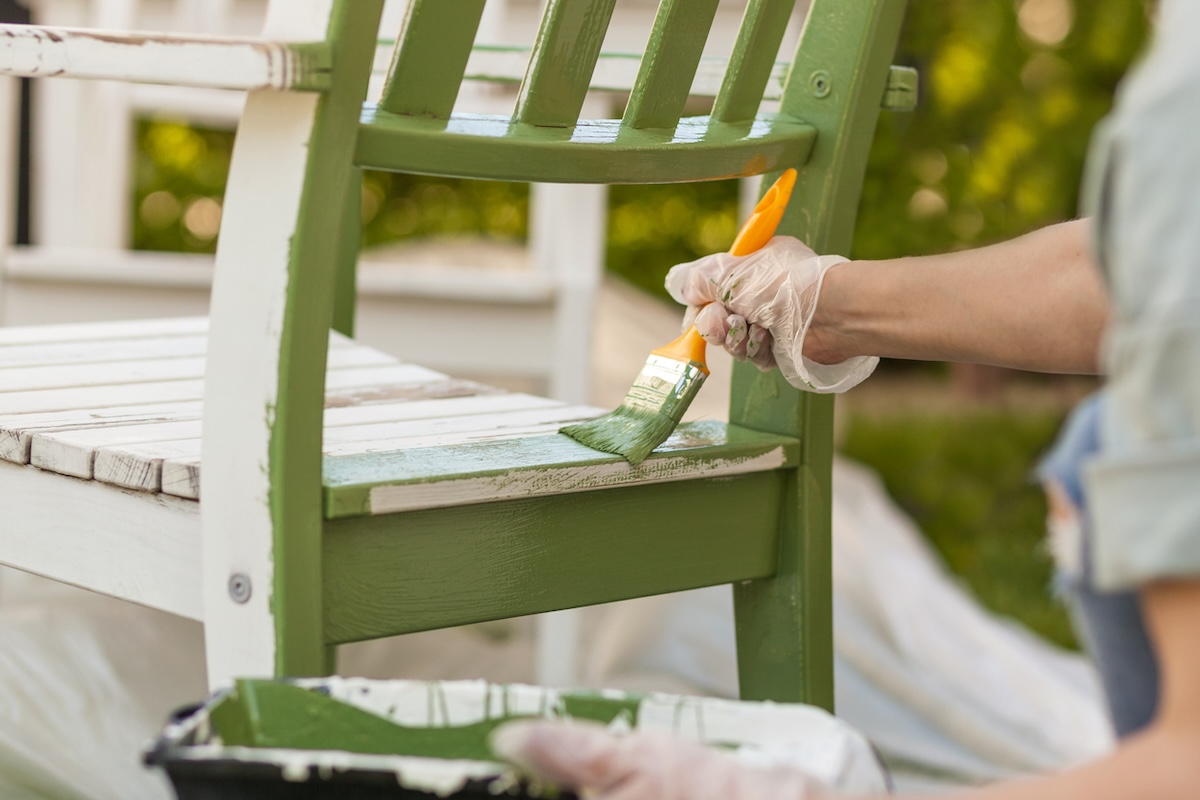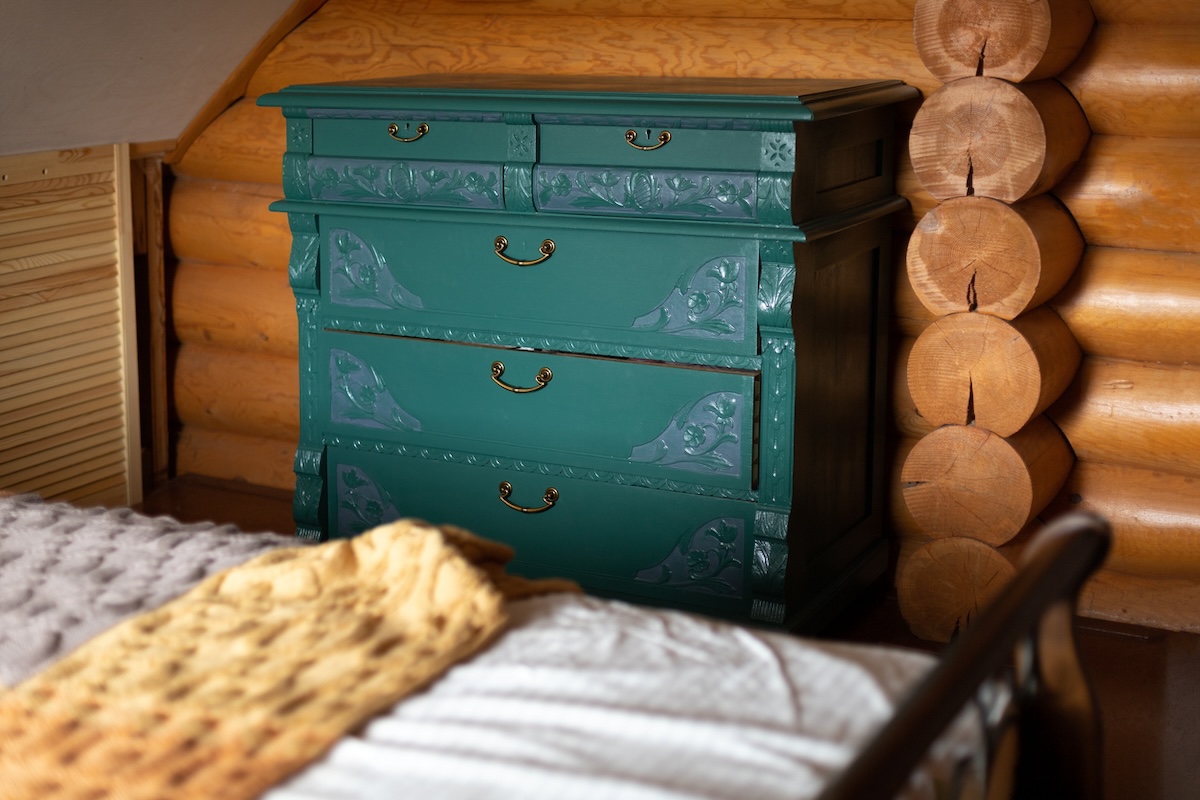

We may earn revenue from the products available on this page and participate in affiliate programs. Learn More ›
Learning how to paint your own furniture opens up a world of opportunities, allowing you to create custom pieces while saving money. In addition, thrifting and upcycling your home decor can benefit the environment by keeping bulky items out of landfills. Painting furniture can breathe life into old pieces, transforming the ordinary into something completely unique.
While it’s easy to throw a coat of paint onto a chair or dresser, achieving a professional finish takes time, patience, and a well-honed set of skills. The process can be daunting for beginners, which is why we’ve put together this comprehensive collection of how-tos, product recommendations, and informational articles to guide you.
Bob Vila will walk you through the fundamentals of furniture painting. You’ll learn how to choose the right paints, how to use different tools, and how to tackle a variety of projects. Our guides cover the basics of furniture painting for those who are new to the craft, as well as some advanced techniques for more experienced DIY furniture painters.
Whether you’re rejuvenating a well-loved family heirloom or revamping a roadside find, the following tutorials are designed to help you master every step of the process, from surface prep to adding the final protective coat.
Tools of the Trade

Using the right tools and materials is essential in order to achieve a professional finish. Painting furniture requires more than just applying paint; it involves a series of steps, each of which requires specific supplies to ensure the best results.
Whether you’re sanding down an old wood dresser or spray painting a metal chair, having the right tools will elevate the quality of your work. While more intricate or advanced projects might demand a broader range of tools, this list of essentials will get you started:
- Sandpaper: Sandpaper is essential for prepping the surface of your furniture. Coarse grits remove old paint and varnish, while fine grits smooth out the surface for painting.
- Screwdrivers: A screwdriver set comes in handy when disassembling furniture or removing knobs and hinges.
- Primer: A good primer provides a uniform base and ensures that your paint adheres properly.
- Paint Brushes: Invest in brushes in a range of shapes and sizes for different finishes and detail work.
- Paint: Choose a high-quality paint suitable for the material of your furniture.
- Painter’s Tape: Painter’s tape helps to create clean lines and protect the areas of the furniture that you don’t want to paint.
- Drop Cloths: Use drop cloths to protect your floor and workspace from paint spills and splatters.
- Rollers: Rollers are ideal for applying paint to large, flat surfaces.
- Sealant: All painted furniture can benefit from a sealant, but it’s especially crucial for protecting furniture that will be used frequently.
Furniture Painting Basics

If you’re a beginner, it can be difficult to know where to get started with furniture painting. Not to mention, with so many different products on the market, choosing the right supplies can be daunting. The first step is understanding and respecting the material you’re working with. Painting wood, for example, demands a completely different process and set of tools and materials than painting metal does. For wood, you’ll often start with sanding and priming, while metal might require special rust-preventive primers. There are paints specifically designed for both of these materials, so choosing your paint accordingly is essential. The following guides focus on furniture painting 101—they should set you up for success, no matter the type of project you choose.
MORE ON THE FUNDAMENTALS:
➤ The Dos and Don’ts of Painting Furniture
➤ The Best Paint for Furniture
➤ How to Spray Paint Metal
➤ Choosing the Right Painting Tools
➤ How to Use a Paint Sprayer Like a Pro
Surface Prep Priorities

The secret to a flawless finish is nailing the surface preparation. While painting bare, unstained wood furniture is relatively simple, many projects involve stripping existing paint, varnish, and stain to create a blank canvas. Then, you’ll have to sand down the wood to create a smooth surface and choose a primer that’s designed to make sure the paint applies evenly. A wood filler may be necessary to repair holes or imperfections in wood furniture. When painting metal pieces, you might need to consider whether it’s possible to cover up a rusted surface. Each of these steps ensures that the fresh paint looks flawless and lasts as long as possible.
MORE ON FURNITURE PAINTING PREP:
➤ Can You Paint Over Stain?
➤ How to Strip Wood Furniture
➤ How to Use Wood Filler
➤ The Best Sanders for Furniture
➤ 6 Things to Know Before Painting Over Rust
Next-Level Painting Techniques

Once you’ve mastered the basics, you’ll be ready to move on to more advanced techniques. When you know how to prep, prime, and paint, you’ll open up a world of possibilities. There are countless DIY furniture painting techniques to try—from antiquing to add a vintage feel to using chalk paint to create a trendy, matte finish. Whitewashing can offer a modern, airy touch, while crackle paint creates a time-worn effect. Each of these techniques is a tool in your arsenal, allowing you to transform the ordinary into the extraordinary and infusing each piece with your unique artistic vision.
MORE FURNITURE PAINTING IDEAS:
➤ How to Antique Furniture
➤ 4 Ways to Make Your Own Chalk Paint
➤ How to Paint Faux Wood Grain
➤ Whitewashing Wood Step by Step
➤ How to Crackle Paint
